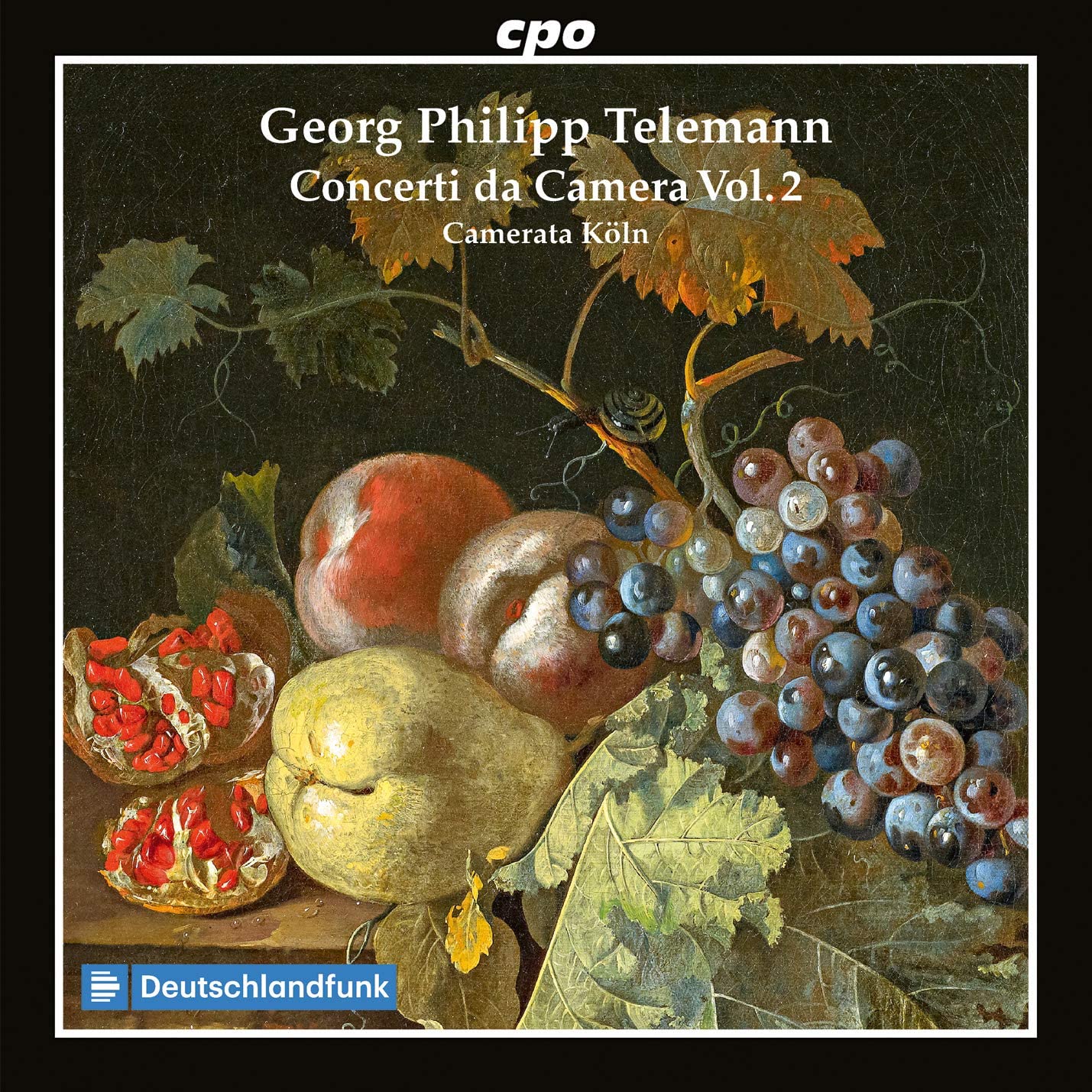Camerata Köln
56:24
cpo 555 321-2
TWV43: C2, D6, D8, F6, G6, G10, 51:D6
Click HERE to buy this on amazon.co.uk
Hats off and “Congrats” to Camerata Köln for their tireless dedication to this repertoire, and here now “looping the loop” with a victory roll, making a super “round-up” of the remaining Telemann works with winds. To only a few with impeccable tracking skills or alert discographic memories, perhaps requisite musicological insights, will some of these pieces be familiar. For the two solo horn works (TWV43:F6 And D8), the fine bookends to this CD, along with the Concerto for oboe, violin and viola in D, this is surprisingly just their second outing! The ensemble’s name is already a by-word for quality of tonality and musicality; these seasoned players shine with an effortless fluidity and captivating melodic charms, supported by the marvellously nimble bassoonist, Marita Shaar-Faust, and resplendent horn(s) of Ulrich Huebner; as he deploys two natural horns on this recording, opening with the Nürnberg instrument of 1720, and ending with a copy of a J. W. Haas instrument. The opening F major work (ca. 1715?) with a brisk élan and great dialogue has some passages recalling the Musique de Table in passing, then the following movements seem to nod towards music found in the wind quintets (TWV44); did it have a previous life as a quintet? It is a curious, yet splendidly engaging, piece with a tail-end Giga. Next comes the jaunty D major concerto for oboe, violin and viola; Hans-Peter Westermann sails through it with his polished, responsive musicianship making the music fly away. In the C major work, the soloists weave a beguiling spell redolent of other Telemann quartets (for example, 43:h3). The playing of the TWV43:G6 is exemplary and should be relished by all! The work listed as TWV43:D6 has in the past been attributed to Handel, and hand on heart or ear, I do detect certain Handelian phrases in the first and third sections (Con Contento and Largo) but the other movements seem much more akin to Telemann’s musical mannerisms, which do seem to re-assure and settle residual ambiguities. Amusingly the unphotographed players of bassoon and horn really make their instrumental contributions felt.
Rounding off this perfect “round-up” a familiar piece, and one less so; the G major work for flute and two gambas is a real tour de force; first on CD in 2001 (Ars Antigua), it is fabulously contoured with superb opening and finishing éclat! I’m amazed this hasn’t become more widely performed, yet I do recall a Belfast concert when the audience clapped after the dazzling Vivace! The closing horn work is another curious hybrid concerto/quartet, with hunting calls bursting into the second movement, the violins having previously woven the sensual introduction alone; adding intrigue, the movement’s theme has a most noticeable closeness to one in a Leopold Mozart horn concerto. The Menuet does feel a tad stiff for Telemann, and yet you could imagine it played during a Frankfurt Collegium Musicum gathering.
In conclusion, this is a neatly gathered and wonderfully played collection of works by the finest musicians, looping the loop!
David Bellinger
